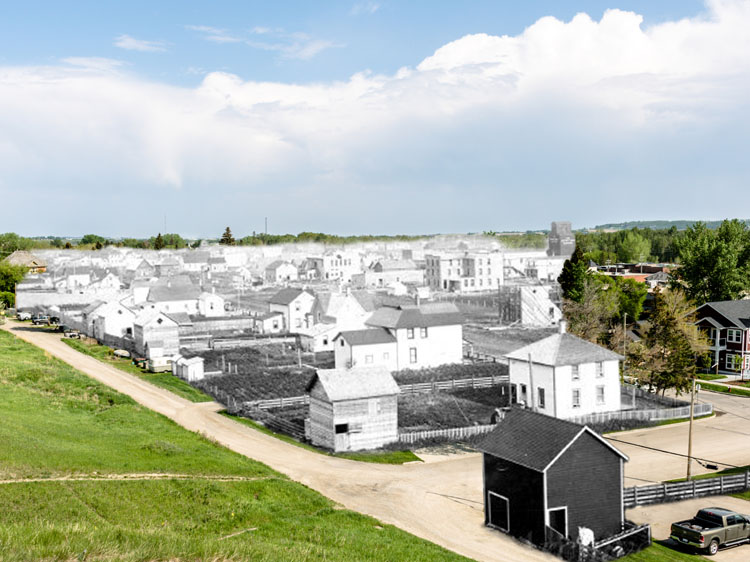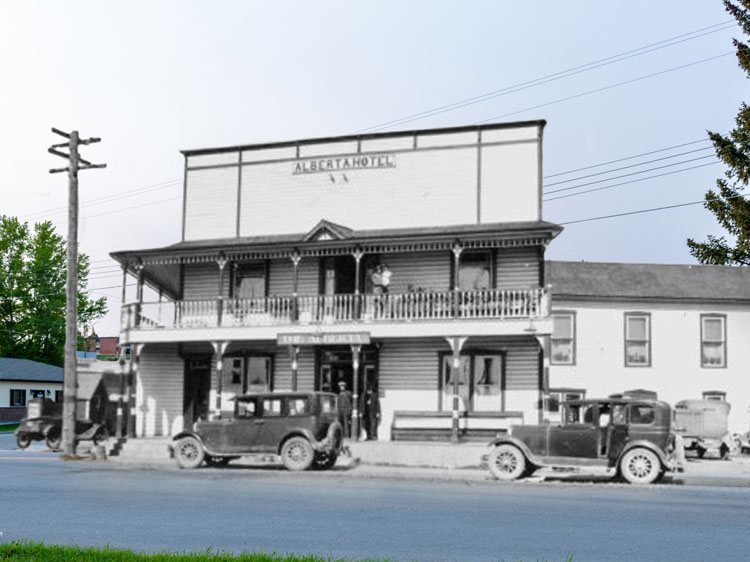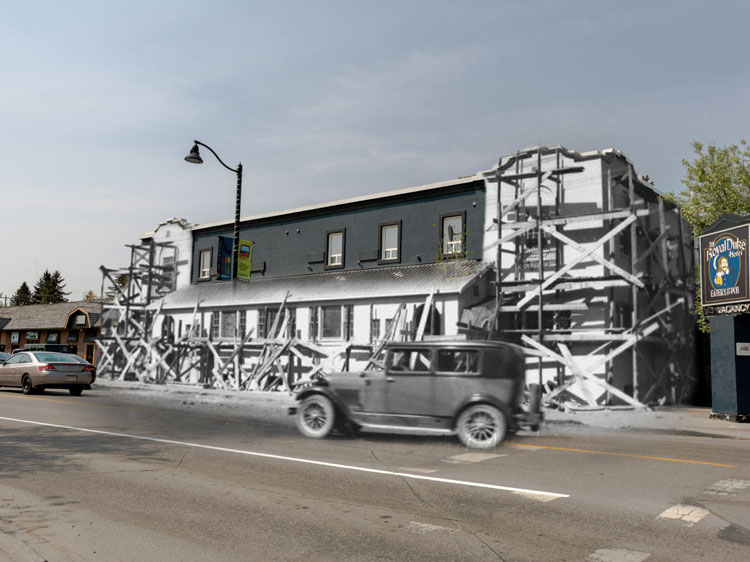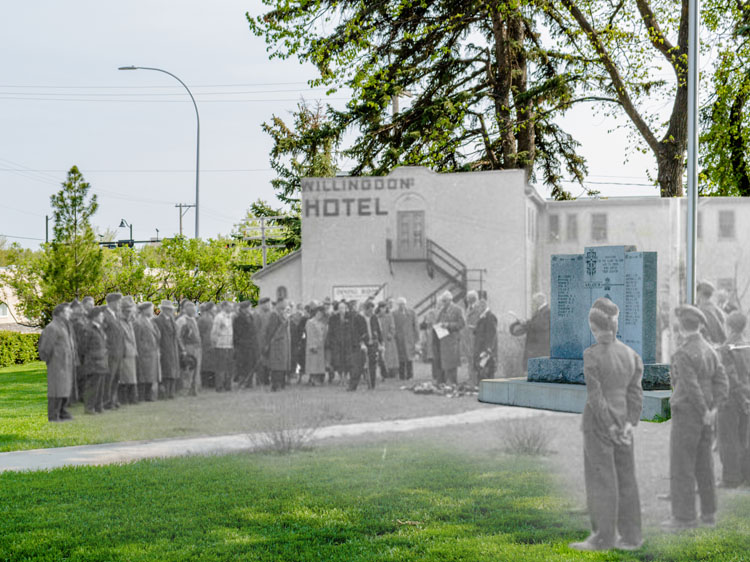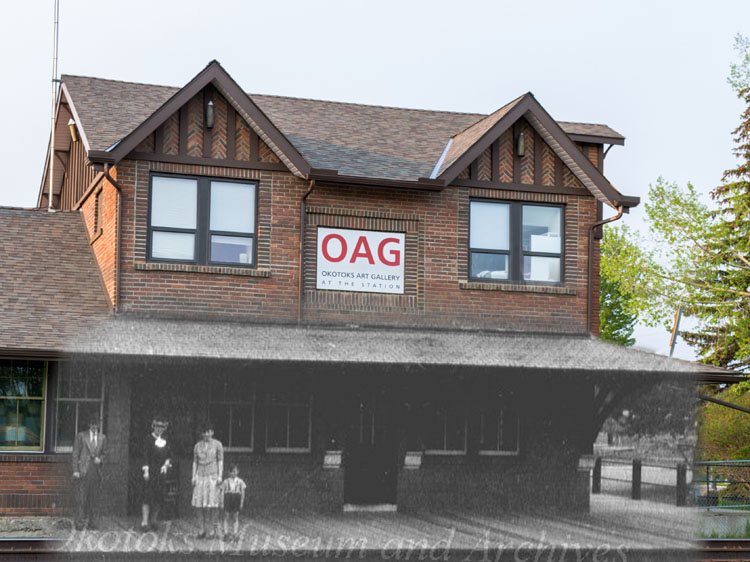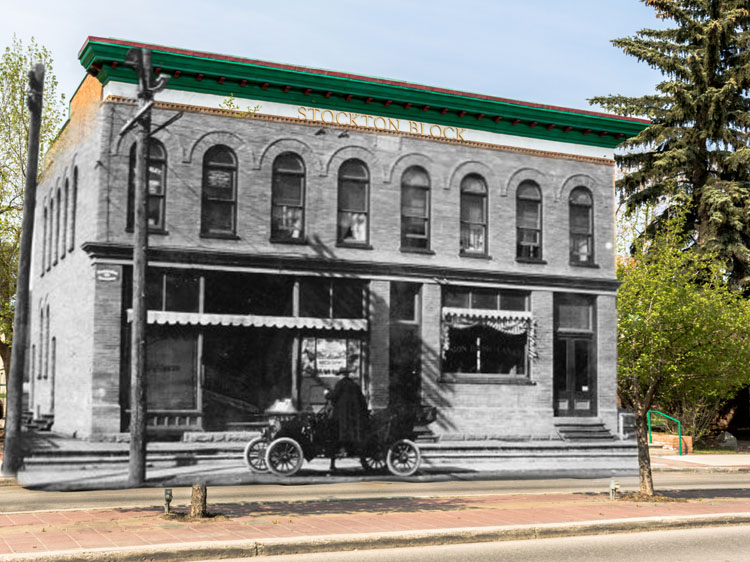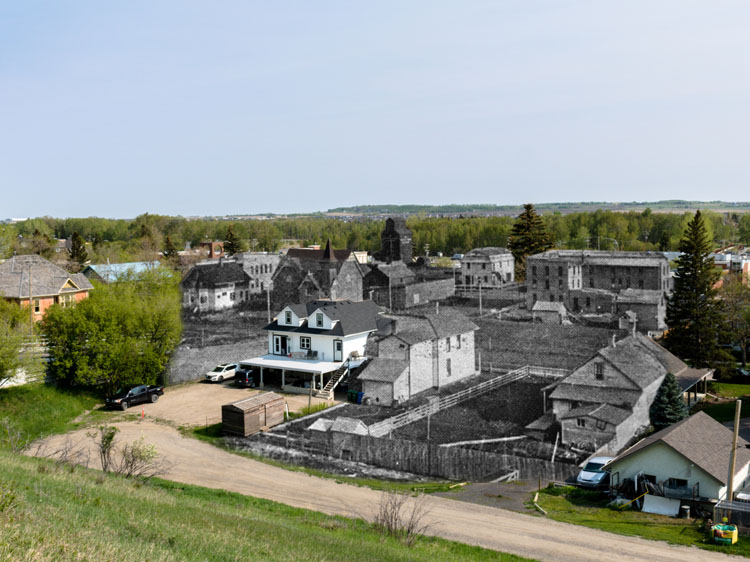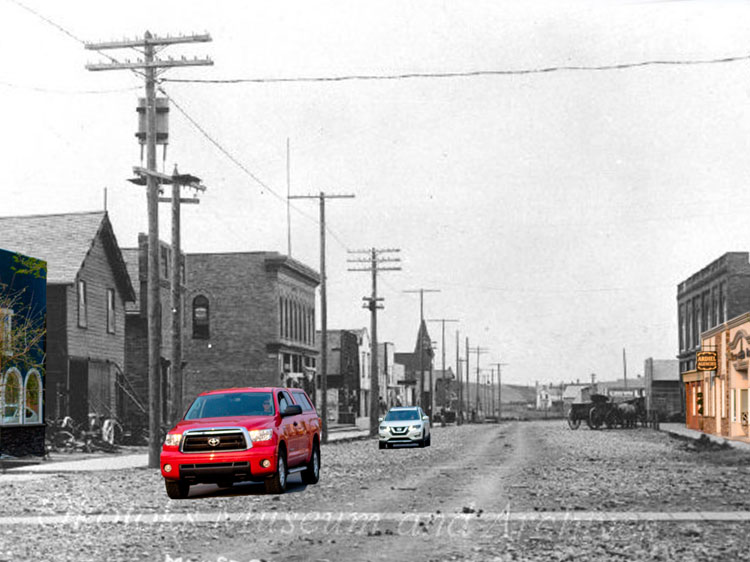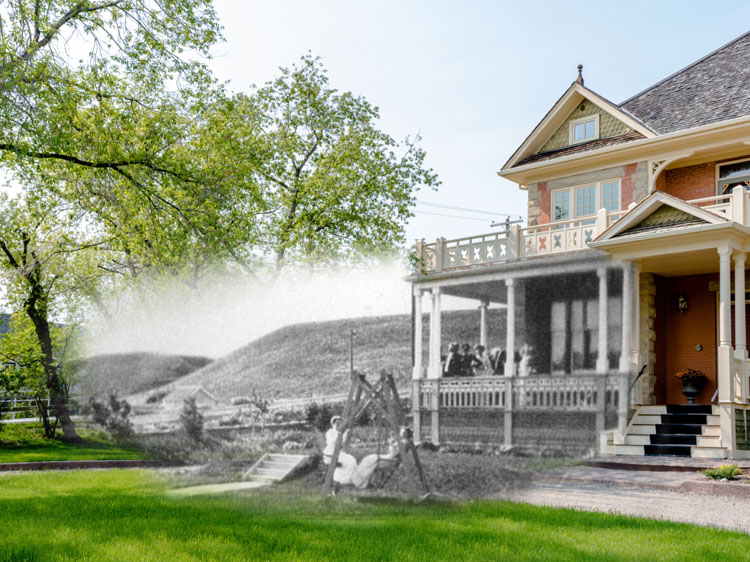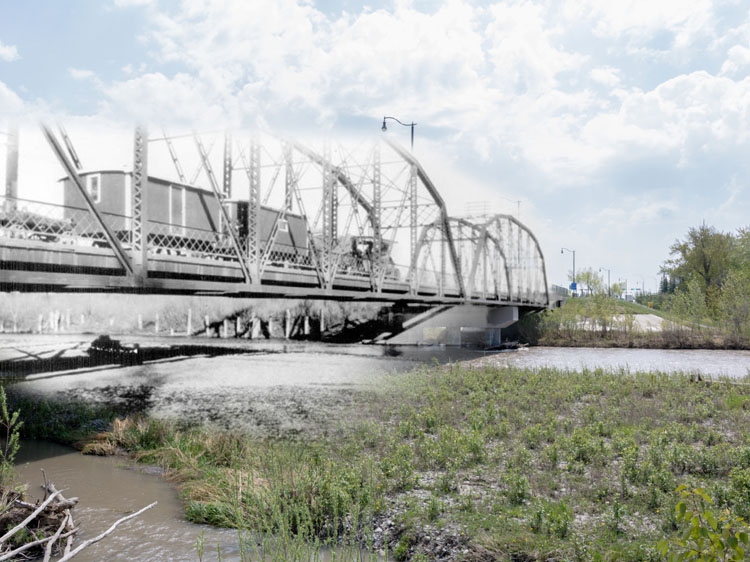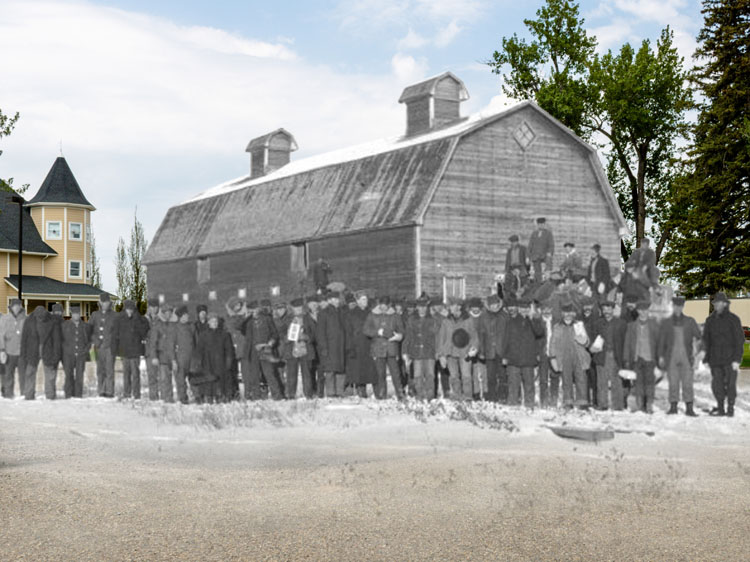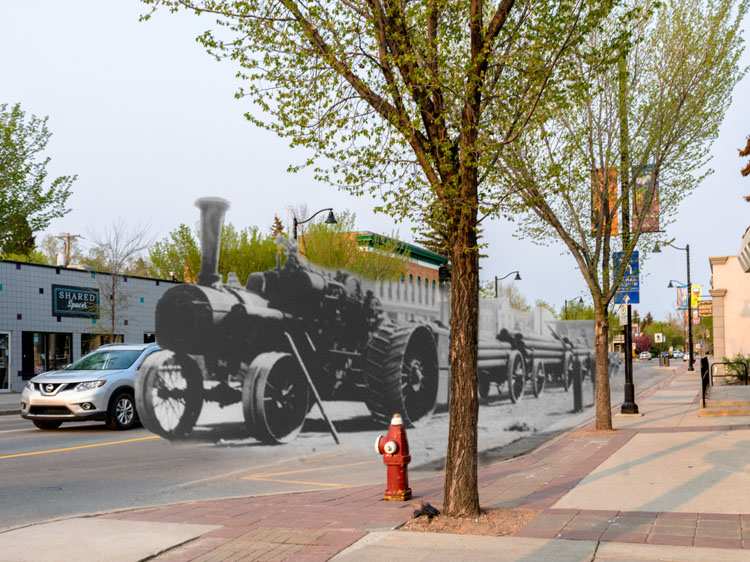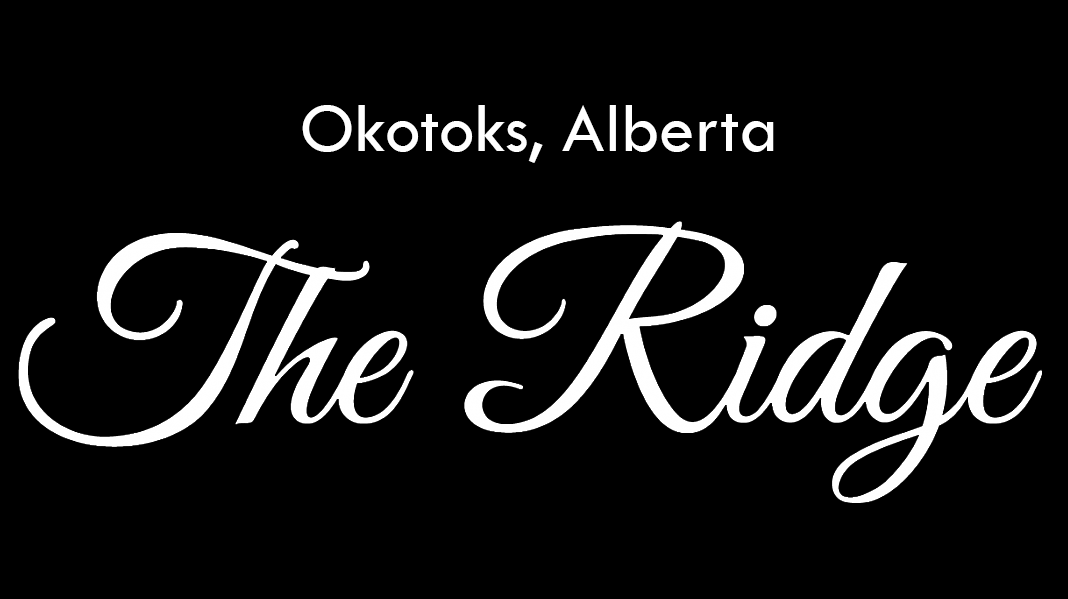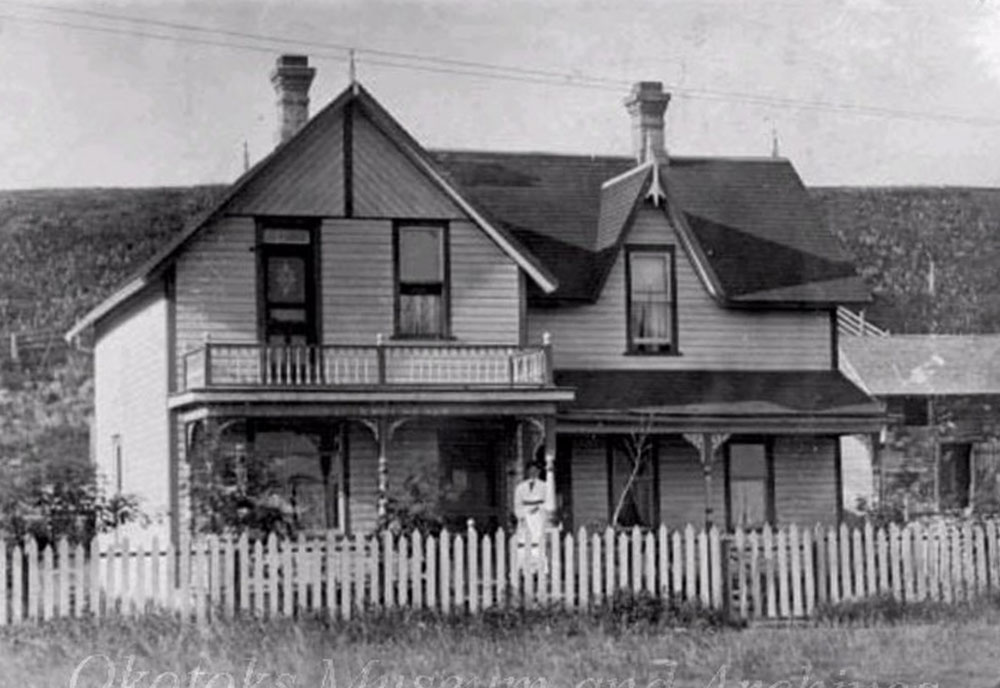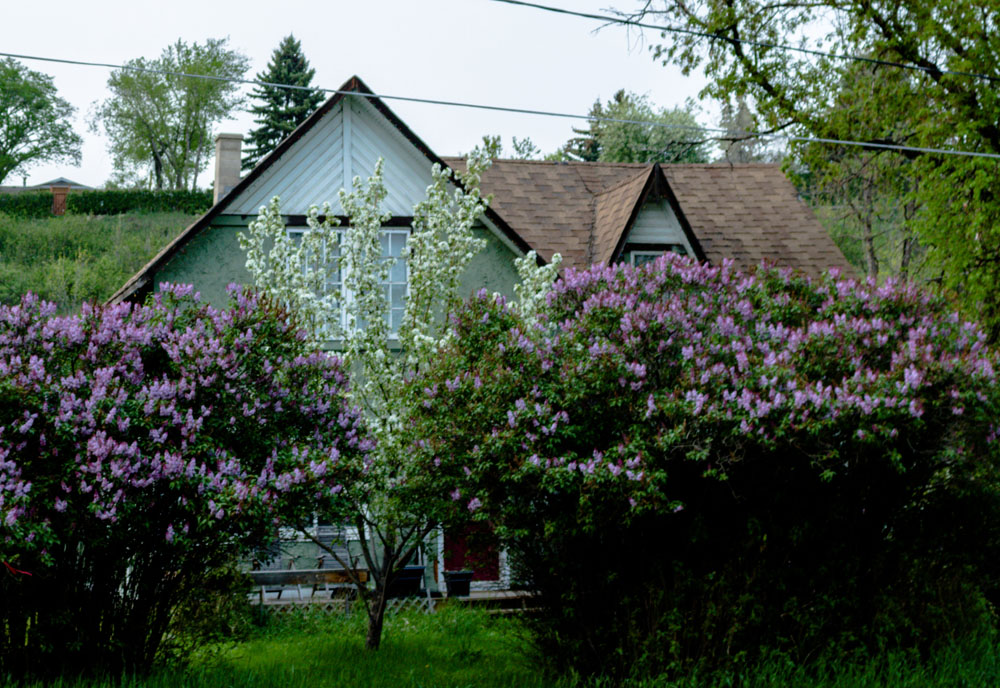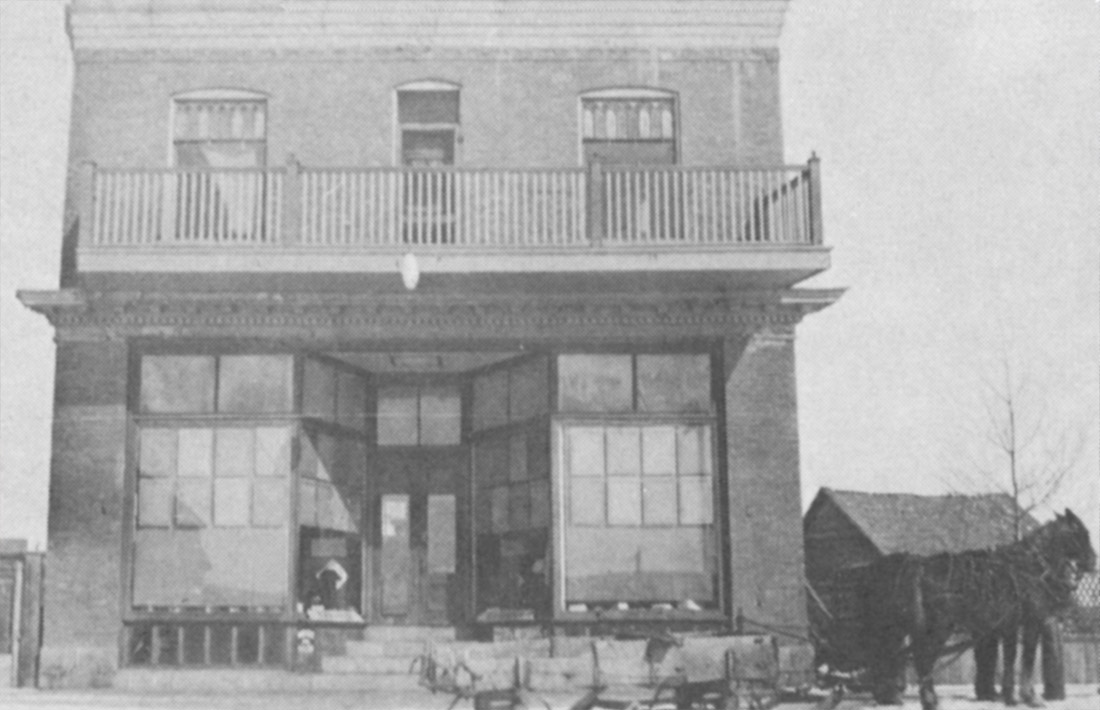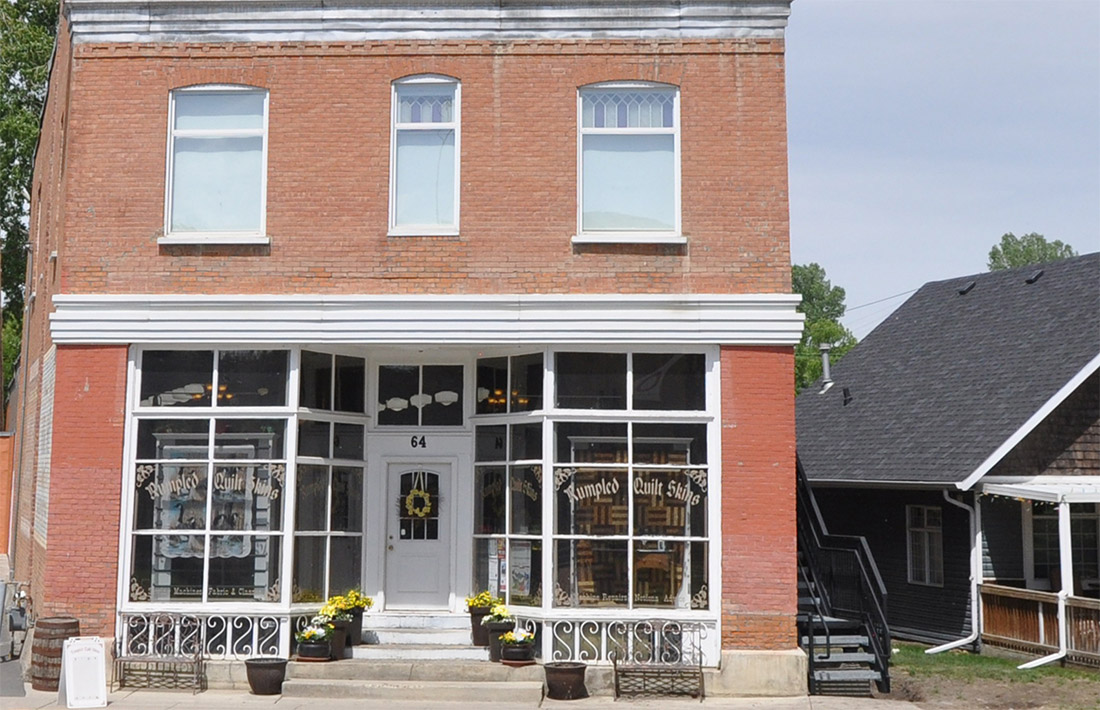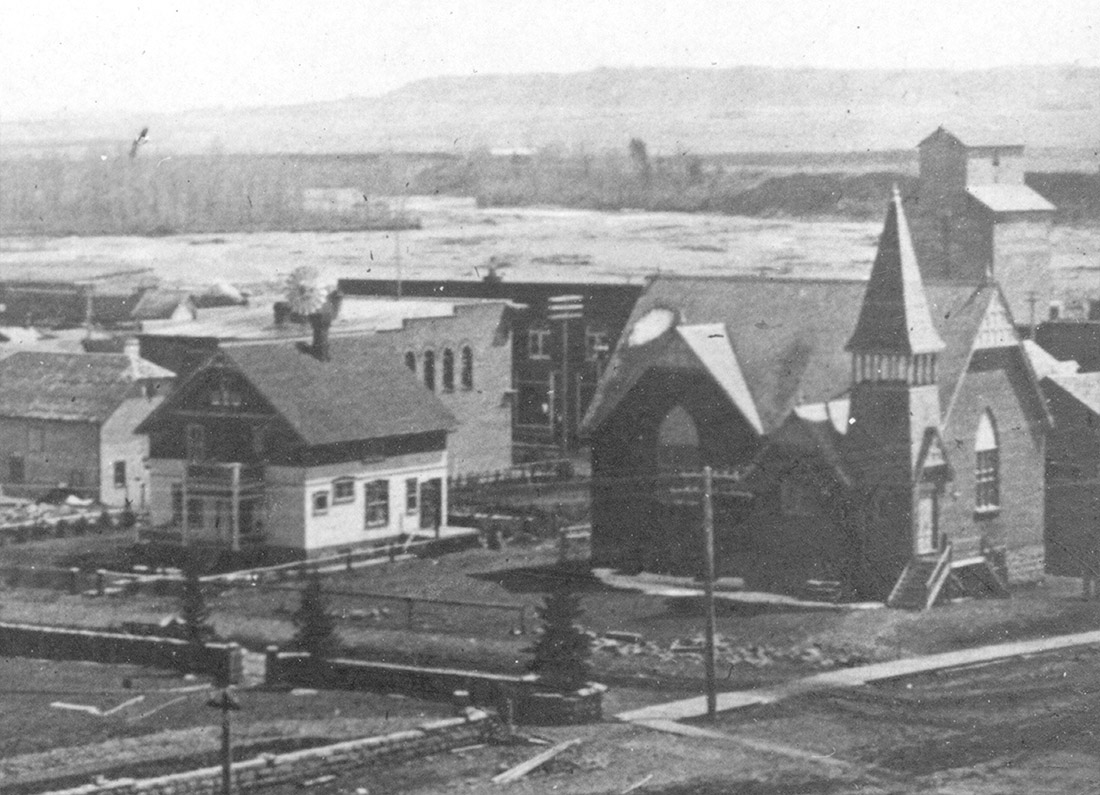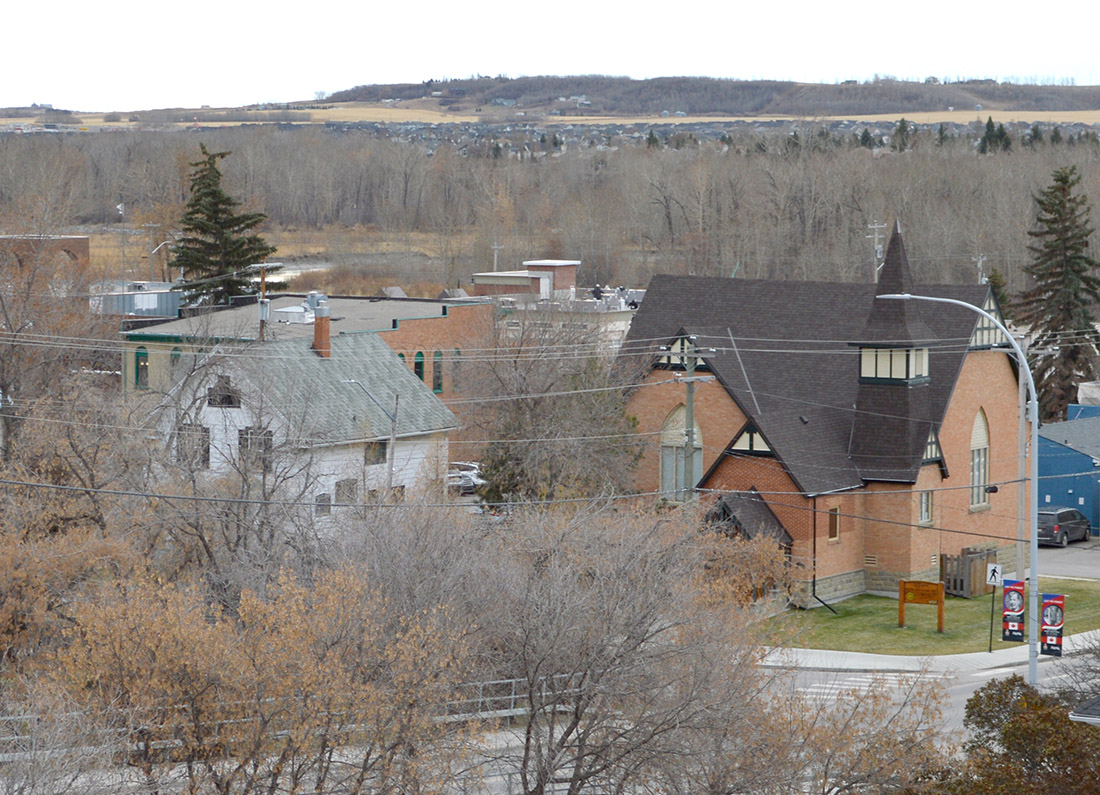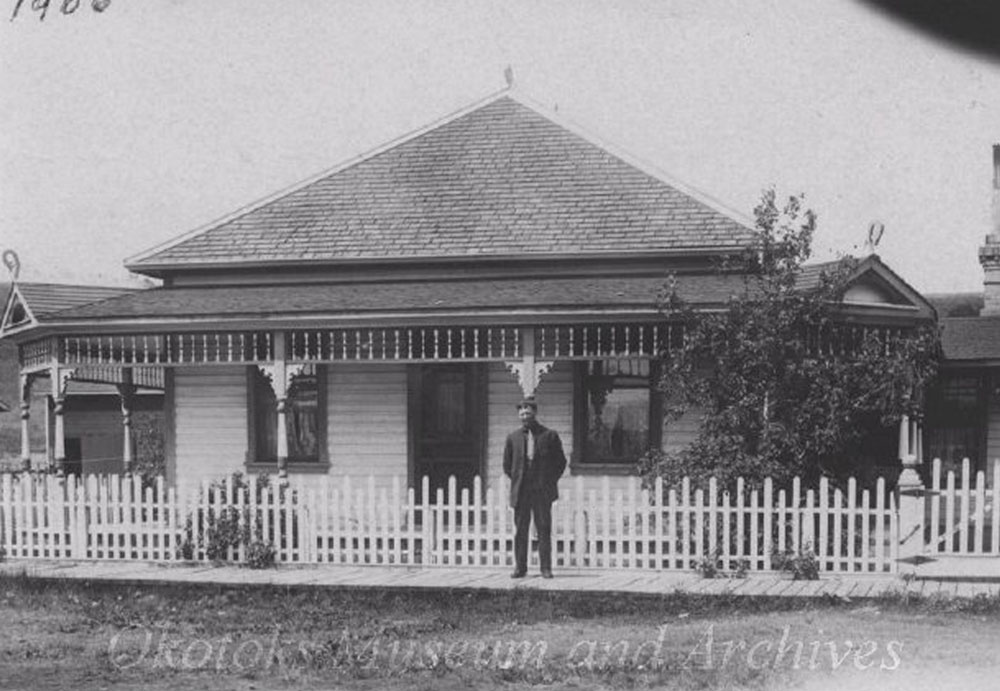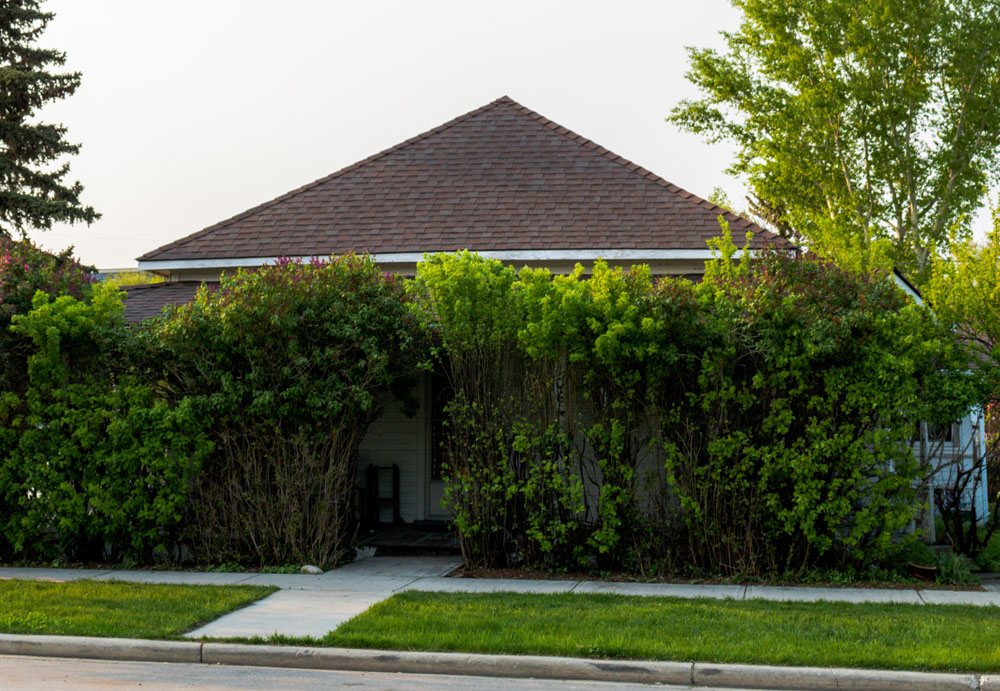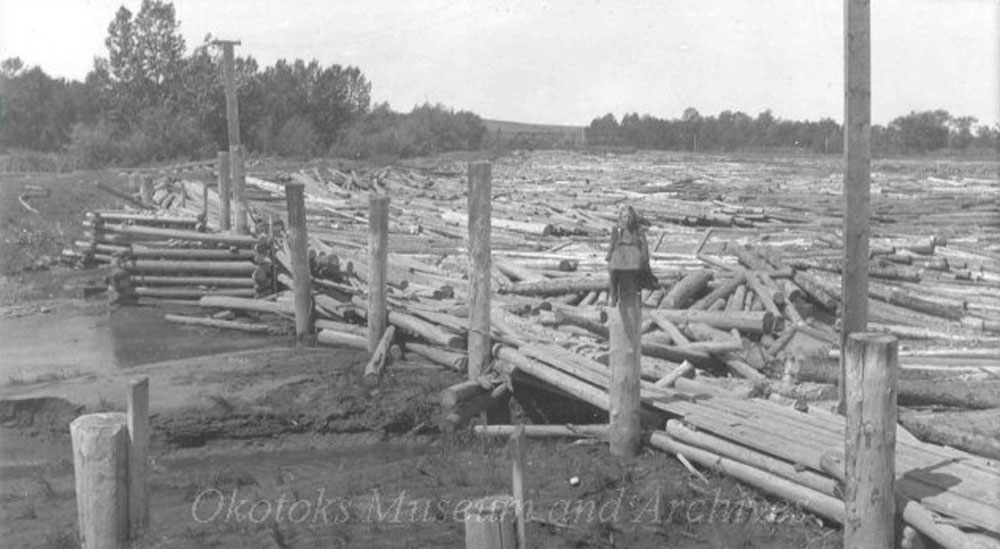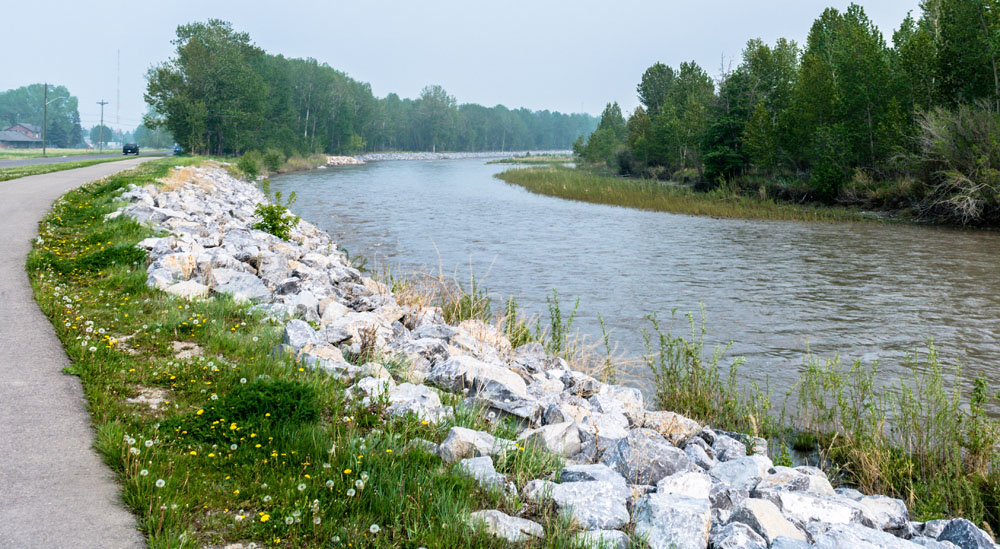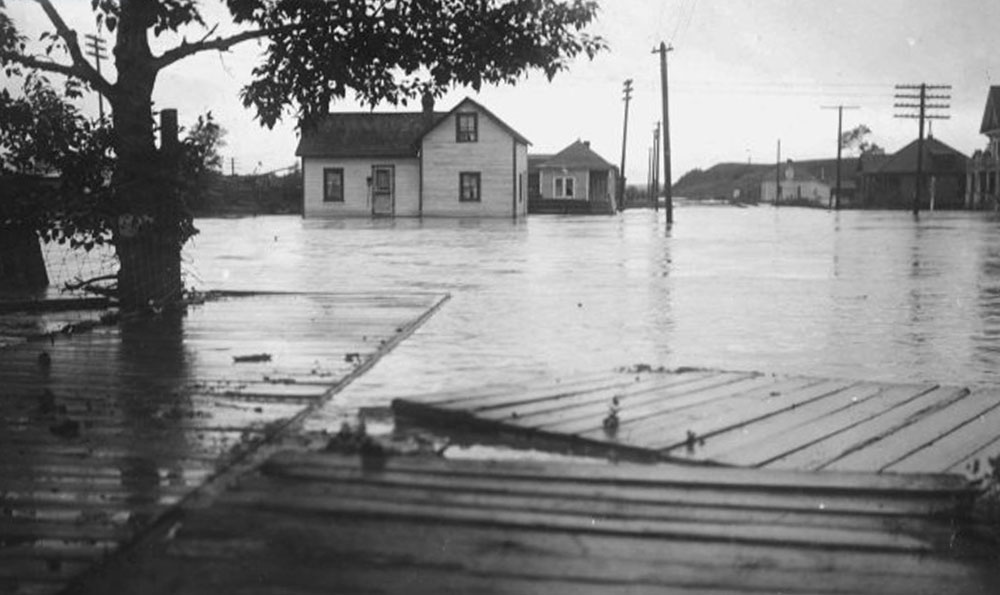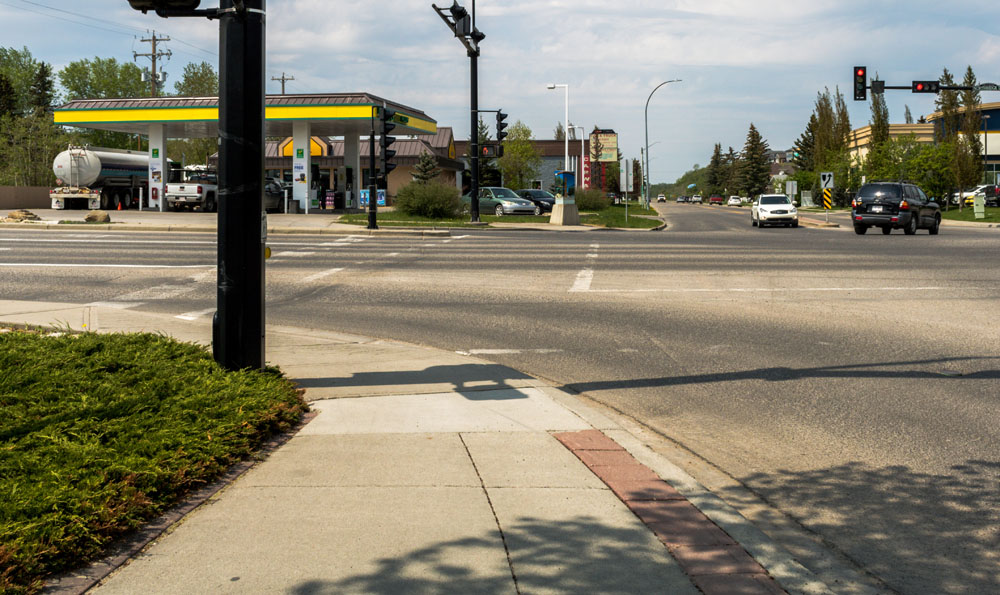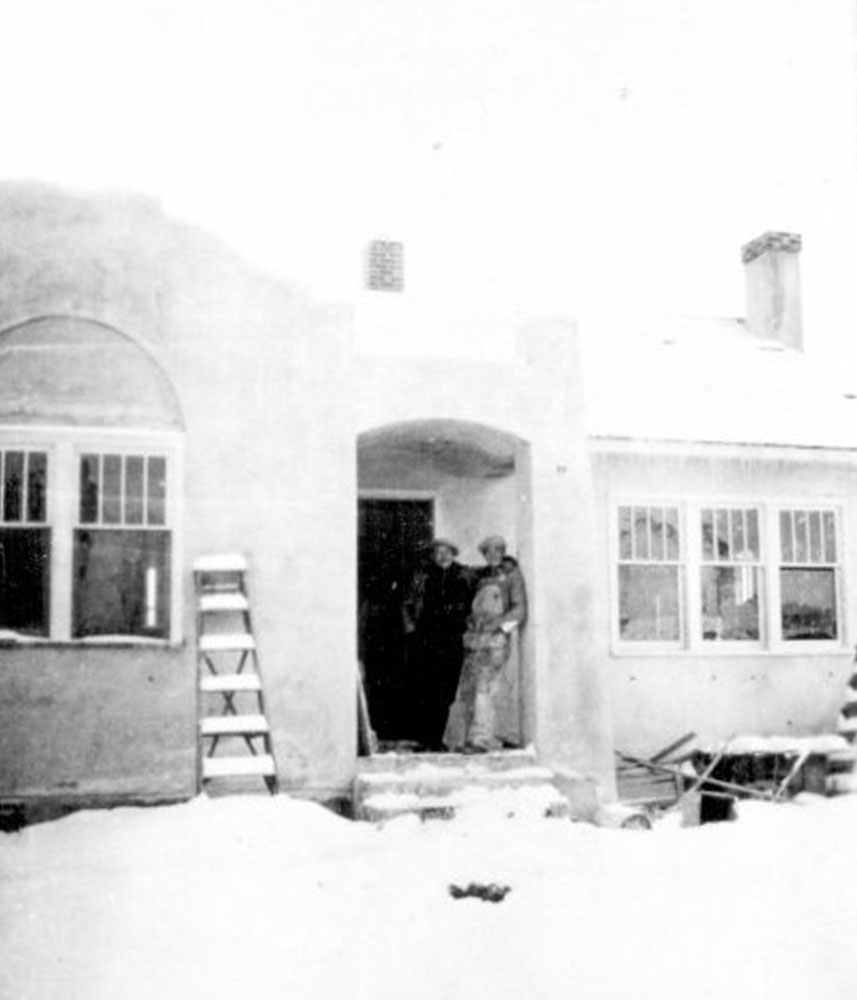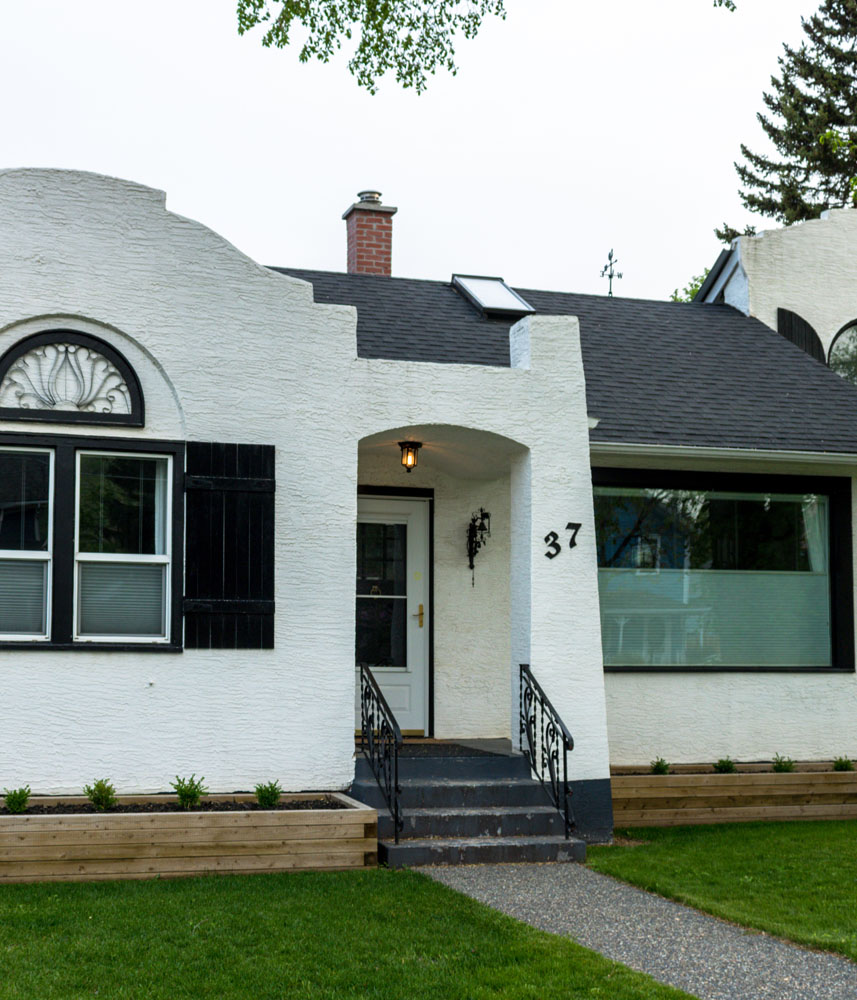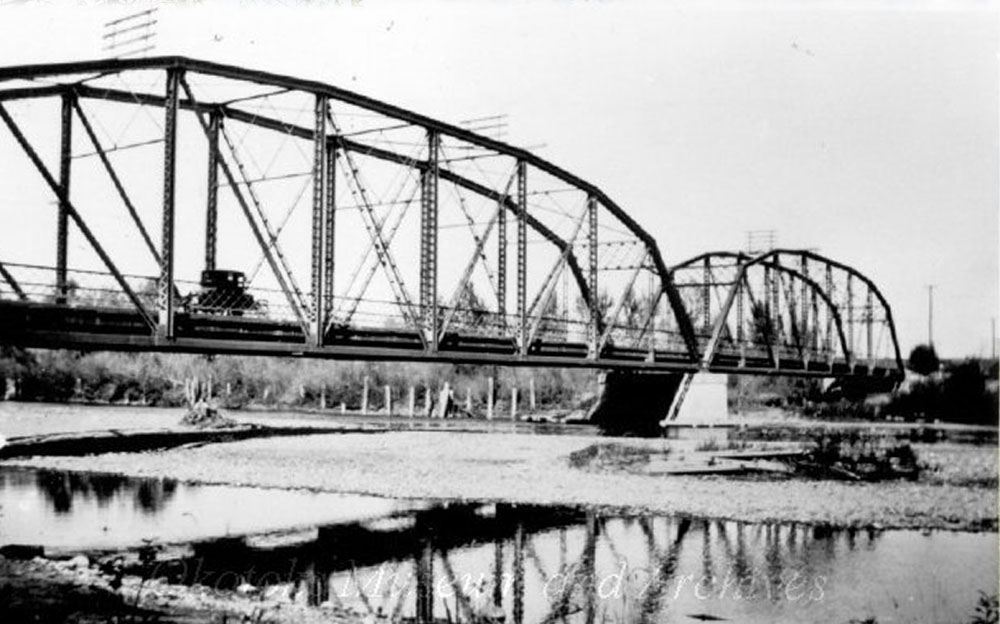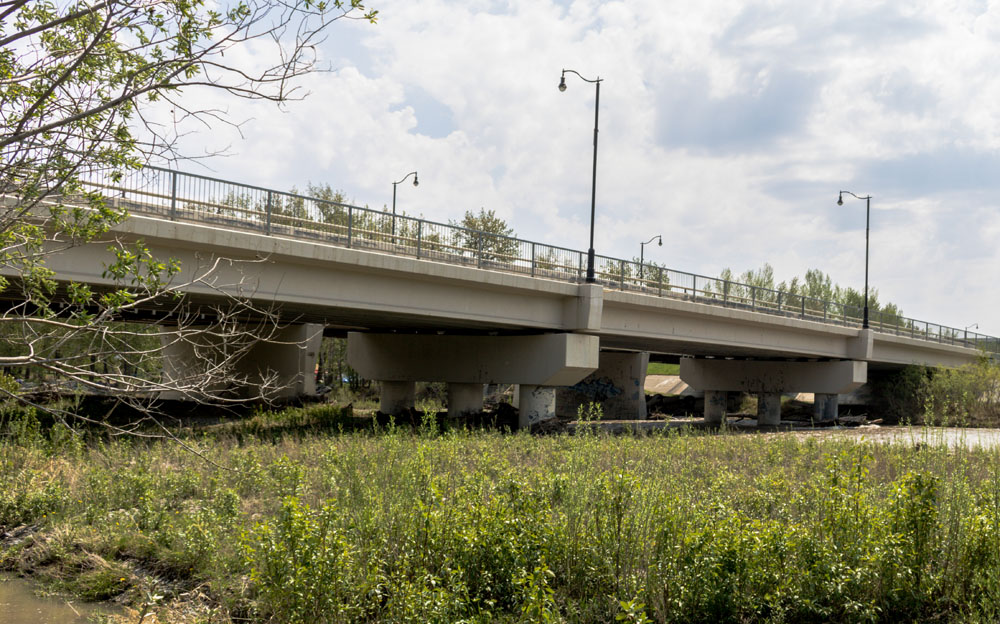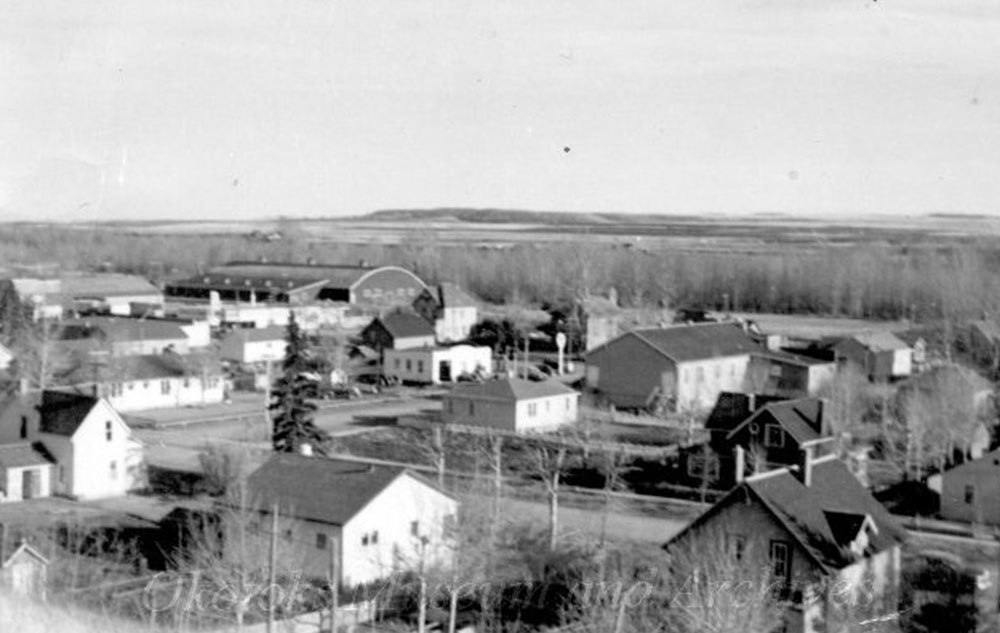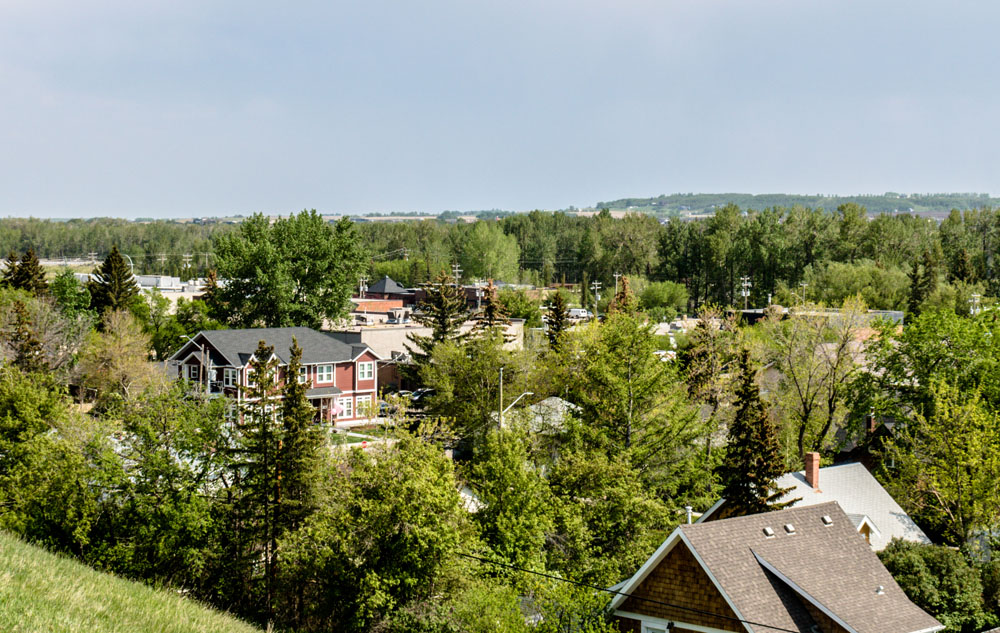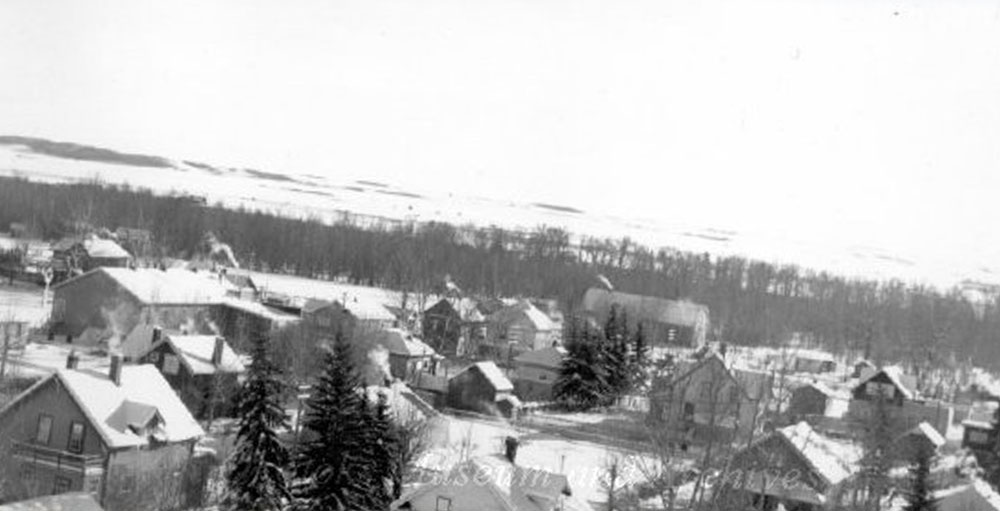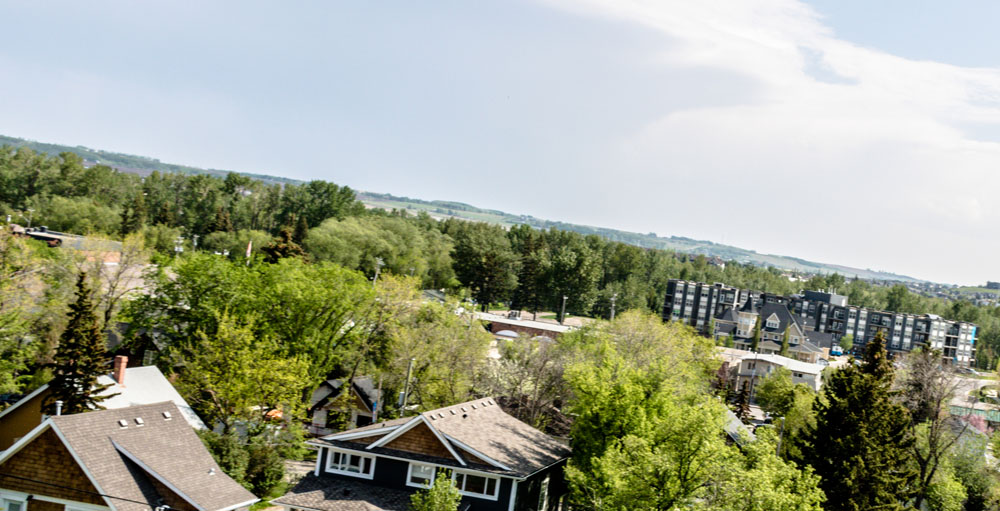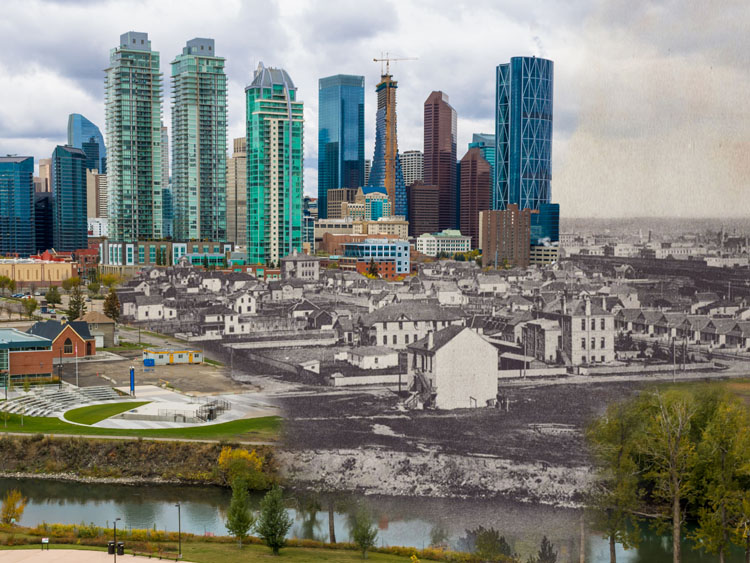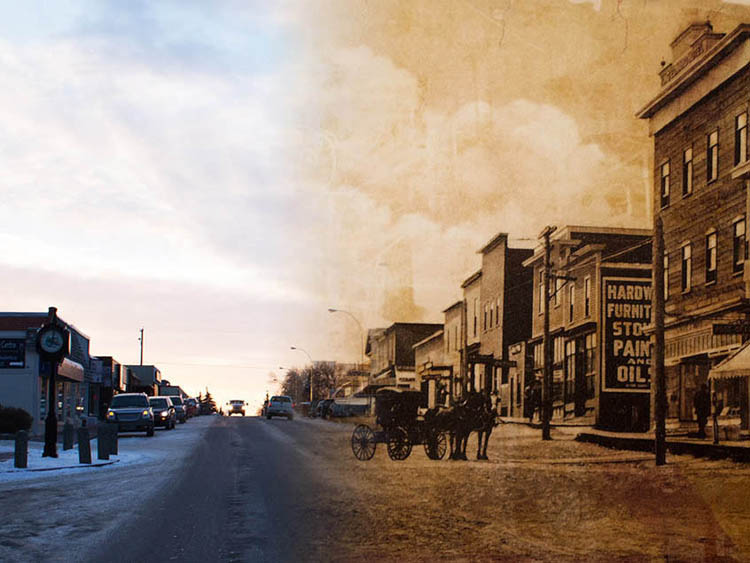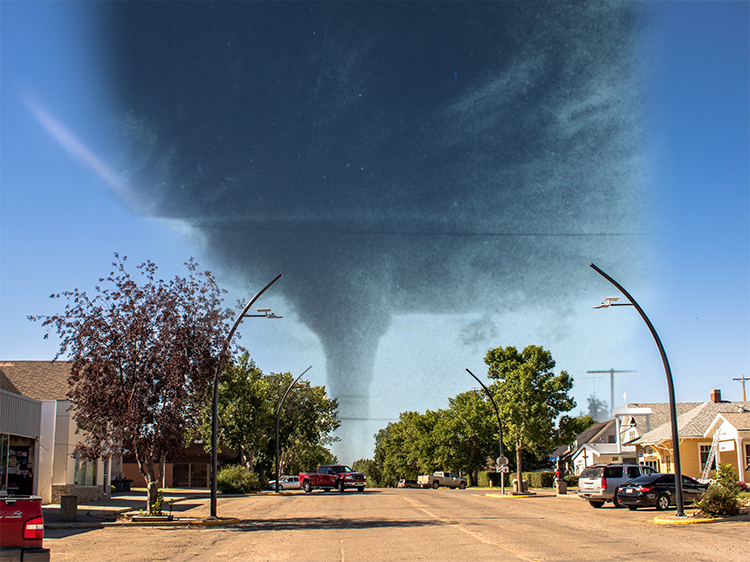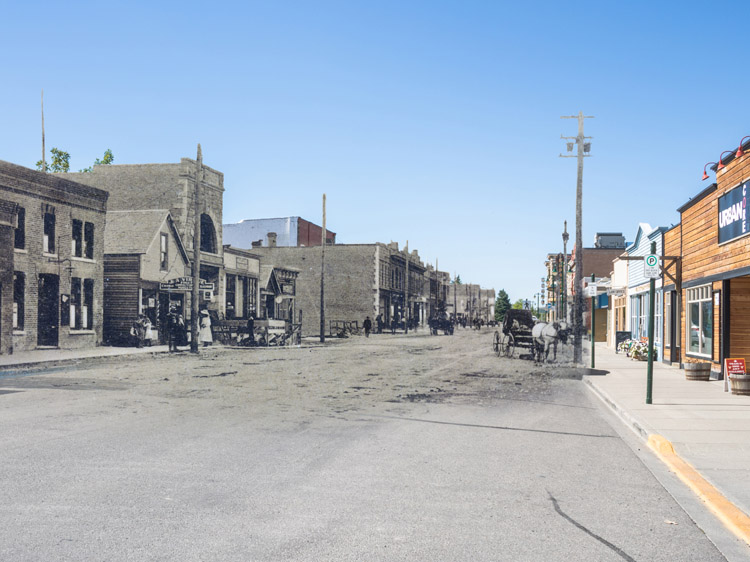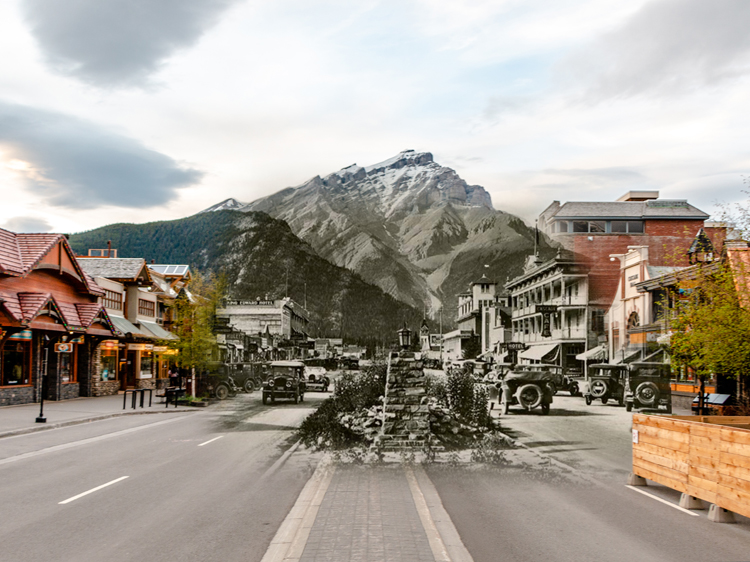Partner City
Okotoks
Life Astride the Sheep River
The Town of Okotoks is located near the foothills of the Rocky Mountains in beautiful southern Alberta. Okotoks gets its name from the Blackfoot word for the giant glacial erratic, the Big Rock, located just west of town. Built near ancient fords over the Sheep River, the village first took root to serve travelers on what became known as the Macleod Trail – the wagon and stagecoach trail that linked Fort Macleod to Fort Calgary. Two early settlers, Kenneth Cameron and John Macmillan, each established stopping houses in the area and this entrepreneurial spirit helped lay the foundation of what would become Okotoks. Today. Okotoks’ historic downtown is home to many heritage buildings and unique businesses that exemplify the community’s proud historic past.
This project is a partnership with the Okotoks & District Historical Society. We also would like to thank the Ridge at Okotoks for sponsoring our work trip.
We respectfully acknowledge that Okotoks is on the traditional territories of the people of the Treaty 7 region in Southern Alberta, which includes Blackfoot Confederacy members Siksika, Piikani, and the Kainai First Nations, the Stoney Nakoda of Bearspaw, Chiniki and Wesley First Nations, the Dene of Tsuut’ina First Nations, and the Métis Nation Region 3, and all those that made Treaty 7 lands their home.
Tours
Life in Okotoks
Growing up in an Alberta town
The Sheep River
The Land and the People
Vanished Okotoks
Places that have been Lost
Working in Okotoks
The Jobs, Industries, and Characters
Explore
Okotoks
Then and Now Photos
Homeowning
1905
Home ownership in Okotoks ranged from grand brick residences to more modest wood-frame homes, like this one at 20 Elma Street East. One of the first owners of this home was Matilda (nee Fiske) Hamilton, widow of Robert Hamilton, and their five children. It is an example of the practical, homestead-style home commonly built at the turn of century; however, this home features significant gingerbread detailing which demonstrates the pride of ownership. Such homes provide a window into the small town Alberta culture over 100 years ago.
Beattie Store
1906
The H. E. Beattie Store was built in Okotoks in 1906 opposite the CPR Station on North Railway Street. Beattie sold the store to his brother-in-law Cliff Wentworth in 1925 who established Wentworth’s General Store. Cliff operated the store until 1950 and then his son Jack took over; both were successful businessmen due to their strong customer service. They knew most of their customers on a first-name basis, they operated on credit and the credit was always paid. “Don’t worry,” Jack would say. “We won’t see you starve.” Wentworth’s General Store closed in 1975. The building is now home to Rumpled Quilt Skins.
Elma Street East
Elma Street East and West were primarily residential streets; however, Elma Street East had some mixed land uses. This photo looks down from the escarpment at Dr. Frederick Stockton’s residence (9 Elma Street East) and the Okotoks Methodist Church (3 Elma Street East). About 1906, Dr. Frederick Stockton constructed his large Edwardian gable-front dwelling to serve as both his home and medical practice. Its architectural style was popular in Alberta in 1901-1914 and exemplifies the economic boom that took place in Okotoks during that period. The beautiful brick Methodist Church next door was also built in 1906. It served the Methodists until 1917 at which time the Methodists and Presbyterian congregations united in Okotoks to form the United Church. That was eight years before the nation-wide unification. It continued as a church until 2002
James J. Morrison
1906
James J. Morrison built this Queen Anne-style house at 106 McRae Street for his bride, Ethel, in 1906.
Mary Daggett
1911
Mary Daggett sits on a piling overlooking the Lineham Lumber Company’s mill pond in the Sheep River at Okotoks. Mary was the daughter of mill manager Ernest Daggett and his wife Alberta. Many of the early photos of Okotoks were taken on Alberta’s camera.
High Water
1915
One of the worst floods in Okotoks occurred in 1915. That’s when water came to the doorstep of Mrs. Scott’s home on the west side of Okotoks and wooden sidewalks floated away.
Spanish Revival-Style
1928
This Spanish Revival residence, located at 37 Elma Street West, was built at the end of a mini construction boom in Okotoks in the 1920s. It is the only residence of this architectural style in Okotoks. The Willingdon Hotel, built in 1928, is the only other building in town constructed in the Spanish Revival style.
Cars on the Bridge
1928
Cars drive across the bridge over the Sheep River in the late 1920s. As cars were popularized in the early twentieth century the landscape of small towns on the prairies began to change. Bridges and roads had to change to accomodate cars rather than wagons and gas stations began to pop up replacing livery stables. Additionally, towns were faced with traffic laws as the amount of vehicles increased.
Okotoks South East
1940s
Looking southeast from the escarpment we can see homes on Elma Street West, the Elks Hall and the Okotoks Arena in the background.
Winter
1950s
Looking southeast from the escarpment in winter we can see homes on Elma Street West, the Elks Hall at left and in the distance the Okotoks Creamery.

